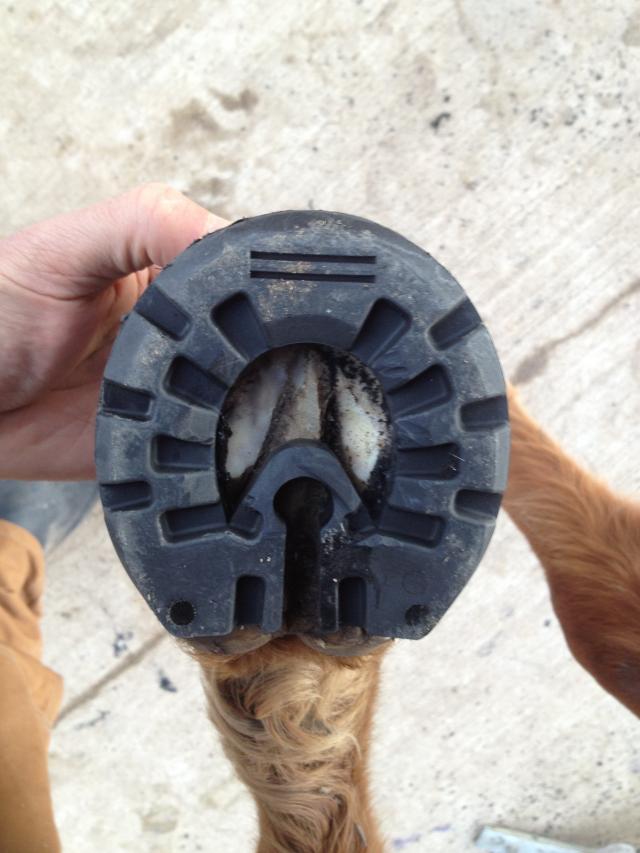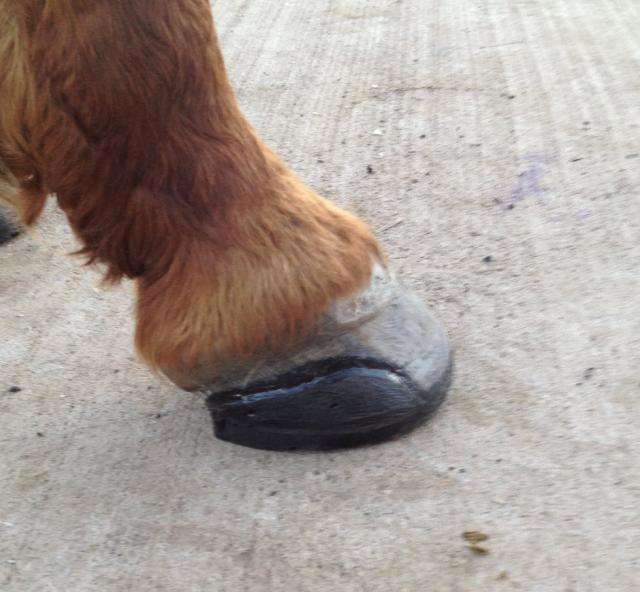I personally believe in the barefoot horse and marvel at what the equine hoof can do. The equine hoof is an amazing structure that expands and contracts under load, dissipates energy, and aids in blood flow. Although I believe that a horse should be barefoot whenever possible, I also believe that horses need hoof protection as distance traveled increases, terrain becomes more abrasive, and the loads carried become greater. We ask unnatural things from our equine partners, far beyond what the bare unprotected hoof can endure.
Hoof boots are a wonderful invention that can be used on a temporary basis when the hoof needs protection. The beauty of hoof boots is that the hoof is bare and functioning as nature intended the large majority of the time. But what about a protection device that can be left on the horse for longer periods of time that still allows natural function? Can a hoof be fitted with a protection device that still allows the hoof to expand and contract, allows the heel to spread, allows the heel to move up and down independently, and also provides support to the frog and heel?
We have been testing a new glue-on device that can be used for 3-6 week cycles that allows a protected hoof to receive many of the same benefits as a barefoot hoof.

Heels can move independently up and down. Heels can expand and contract after the shoe in glued in place.

The test model EasyShoe provides frog and heel support. The wide web of the shoe aids in loading the hoof. The sole is open to air in the center for extended use.

Open at the toe so breakover can be adjusted

Glue channels and holes are added in several areas of the shoe to better accept adhesives and speed the application process.
Initial testing of the new device for endurance conditioning has been very positive. It should prove a valuable tool for farriers and hoof care professionals and have many uses.
Uses may include:
- I can see it used as a transition device to stimulate the hoof toward a stronger hoof before pulling shoes.
- It may be used by owners who believe the barefoot hoof is the most healthy but want the convenience of long term protection.
- It could also be used in disciplines that don’t allow hoof boots.
I’m very excited about the new test shoe and the results I’m seeing on my horses. I’ve had many prototypes on my horses over the years and this one is up there with the best I’ve tested.
What do you think? Does the new device have a place in the horse industry?
Garrett Ford

President & CEO
I have been President and CEO of EasyCare since 1993. My first area of focus for the company is in product development, and my goal is to design the perfect hoof boot for the barefoot horse.





